The gentle patter of lukewarm warm rain contrasts the cooling clang of Japanese wind chimes as I awake on the first morning in Kyoto. The high rise silhouettes of Tokyo’s cityscape haunt my vision as the lashes of my eyes flutter and I focus in on a piercing grey column of light that splits the curtain folds of our Japaning apartment. My mind is completely still for a second before I roll into the duvet and shut my eyes.
‘…Wake up, you’re dreaming!’
As I pull back the duvet and then the curtain I promise myself an egg sandwich from Lawson (hail, Lawson!) before I hit the shower, waking my family in the process. Everyone’s still a bit tired but one word is all it takes and before we know it we’re all mobilised and ready to go.
“Sagano“, here we go…

Under the lengths of dripping overhead cables that line the cosy residential alley, we march towards our breakfast. Heading back towards Kyoto Station we now have time to notice the things we hadn’t on our initial, sweat and stress-fuelled trek.



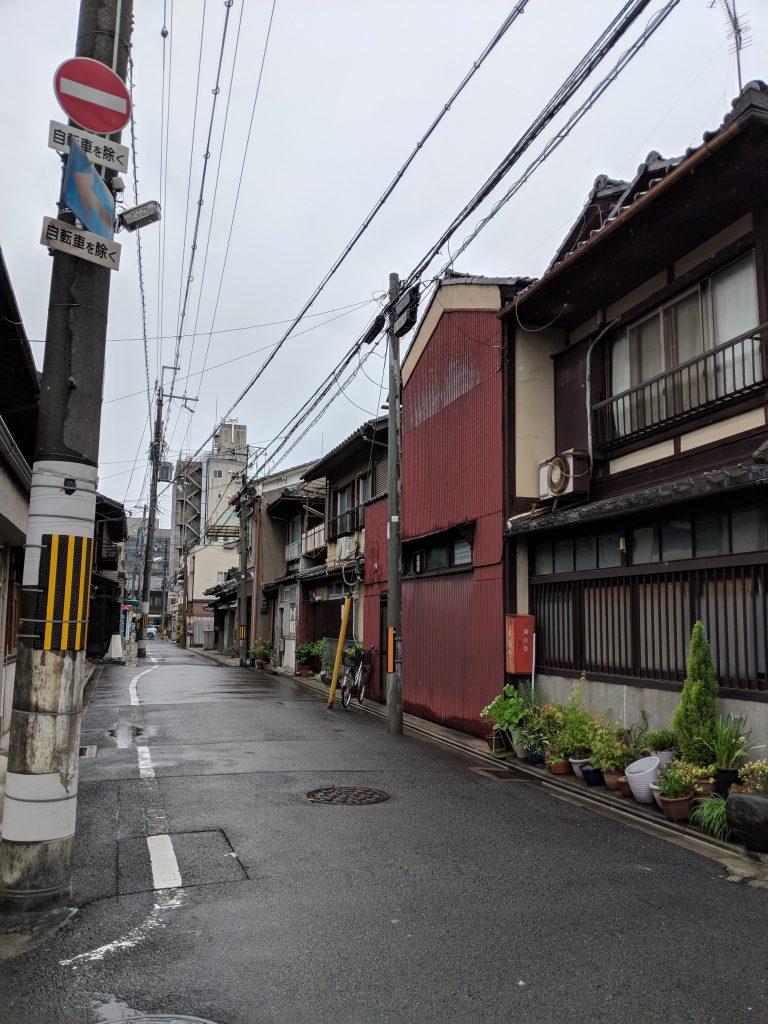
The housing area had a more rustic feel than similar areas we had seen in Tokyo. The houses have a fabricated and sometimes cobbled together look about them, mixing traditional styles with more modern shapes and materials. Some houses had driveways which doubled as gardens of sorts. Meanwhile, some plots were themselves parking spaces, something absent from Tokyo due to the density and verticality of its space.



Out on the main streets that lower vertical density could also be observed, as businesses were more likely to be spread across the ground level and spaces between the buildings made way for more vehicular parking space. Despite the rainclouds that filled the sky, the streets seemed as open and bright as some of the larger spaces in the big city.
Though it isn’t as large or populous as some of its neighbours, you still get that city vibe in Kyoto. Especially in the main streets and areas surrounding the train main stations. Which, as mentioned in the last blog entry, are a city within themselves.
For example, the tenth floor of the station building is known as Kyoto Ramen Koji (Kyoto Ramen Street), which houses various noodle soup vendors that showcase versatile delights from across the different regions.
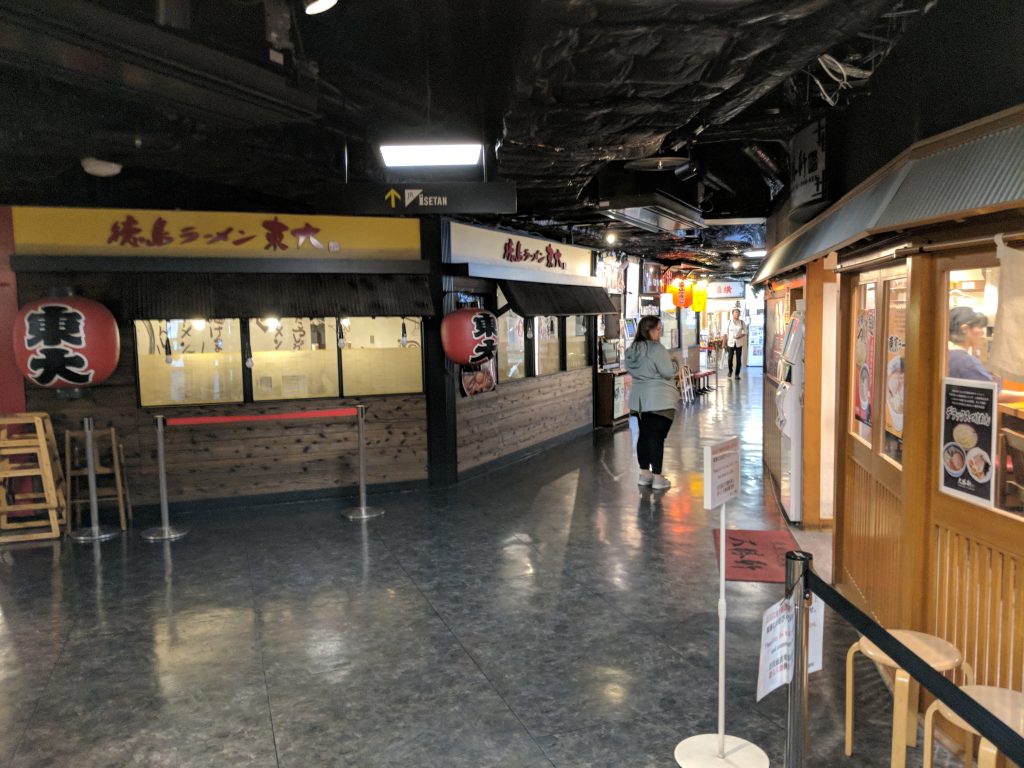
However, we were a little too early for this as, like a lot of places in Japan, they don’t start serving customers till 11 AM. Instead, we headed down and waded through the sea of dining experiences before we found a small, smiling bakery store (Oreno Pan Okumura) that provided us with some tasty pastries to take with us.
The rain has eased up and the station platform is awash with wet soles as we board the train that will take us northeast to the Ukyō-ku ward of the Kyoto prefecture. Our aim is to visit the tourist magnet that is Sagano and Arashiyama.
The rain resumes, making sure to welcome us upon our arrival at Saga-Arashiyama Station, which has an imposing JNR Class D51 steam locomotive outside at the adjacent 19th Century Hall.



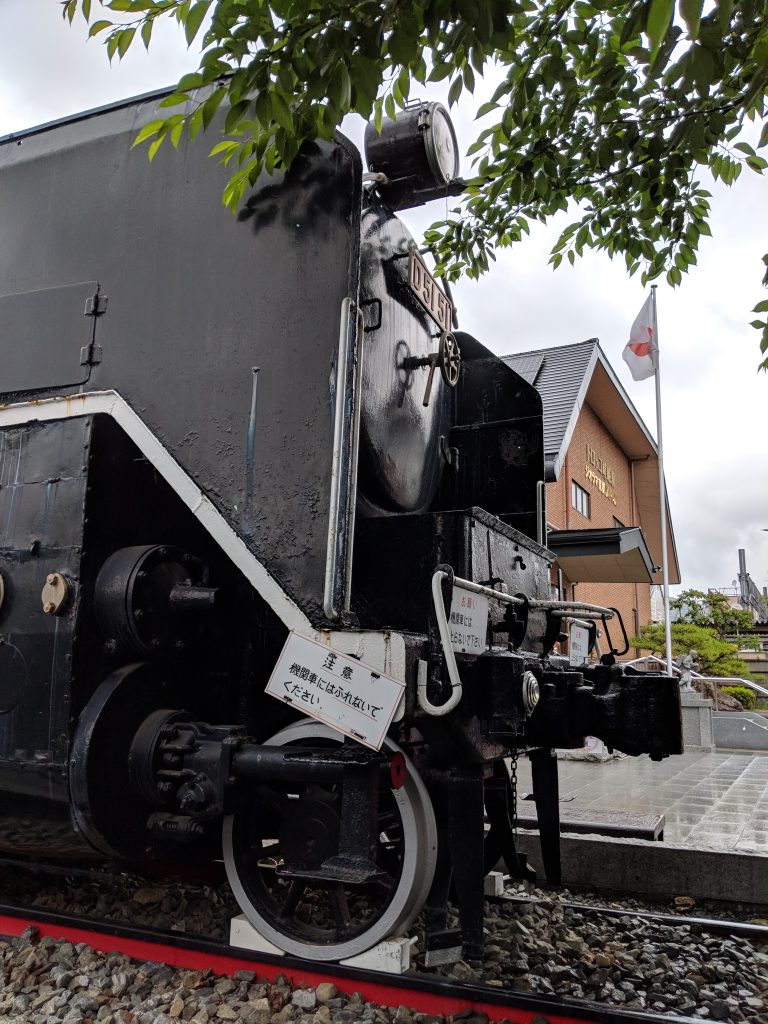
Notice boards, maps and floor markers guide us along a cute residential route and towards the base of the Arashiyama (‘Storm Mountain’) which looms ominously in the distant mist.
We grab some ice creams from a vending machine and enjoy the stroll.


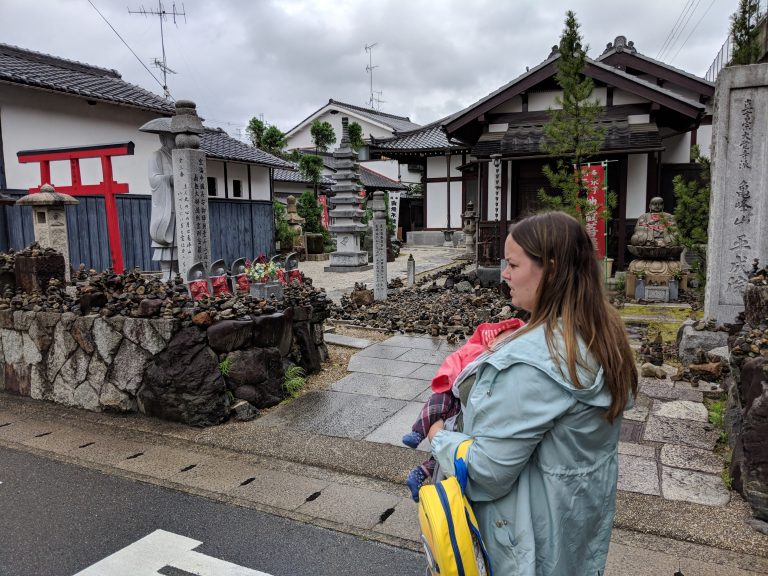

As we cross a particularly busy street along the route we are approached by some school children accompanied by their teacher. They’re on a day trip, they tell us, and would like to ask us a few questions so they can practice their English. I palm them off to my partner and we all get a chuckle as they try to conversate. They ask her what her favourite Japanese food is, to which she replies with ‘Mochi‘ but her accent throws off the boy leading the questioning. He looks dumbfounded and just repeats the sound he heard a few times while his classmates laugh amongst themselves before giving snapping him out of his daze by explaining she means the sweet little rice cakes every Japanese child should be familiar with.
Reflecting on our jolly exchange we suddenly find ourselves walking through the luscious green of the Bamboo Forest, one of the key sites of the area.

It felt odd that this natural beauty was just a minute walk down some nondescript side street but that’s the magic of Japan. Ancient and modern, natural and man-made – side by side in harmony.

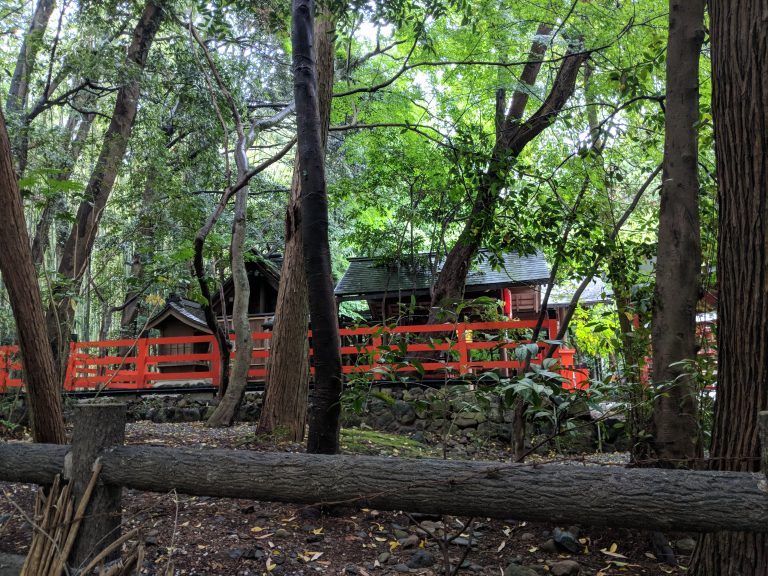


Along the way, we pass by Tenryū-ji Temple Cemetry and Nonomiya-Jinja Shrine before arriving at the entrance of Tenryū-ji. All the while a separate path runs parallel to the main track, which is reserved for rickshaws. Though we didn’t get to ride we did enjoy being able to stop for pictures and breath in the fresh, damp forest air at our own pace before opting to pay the reasonably small fee to explore the temple grounds.
We are not disappointed.



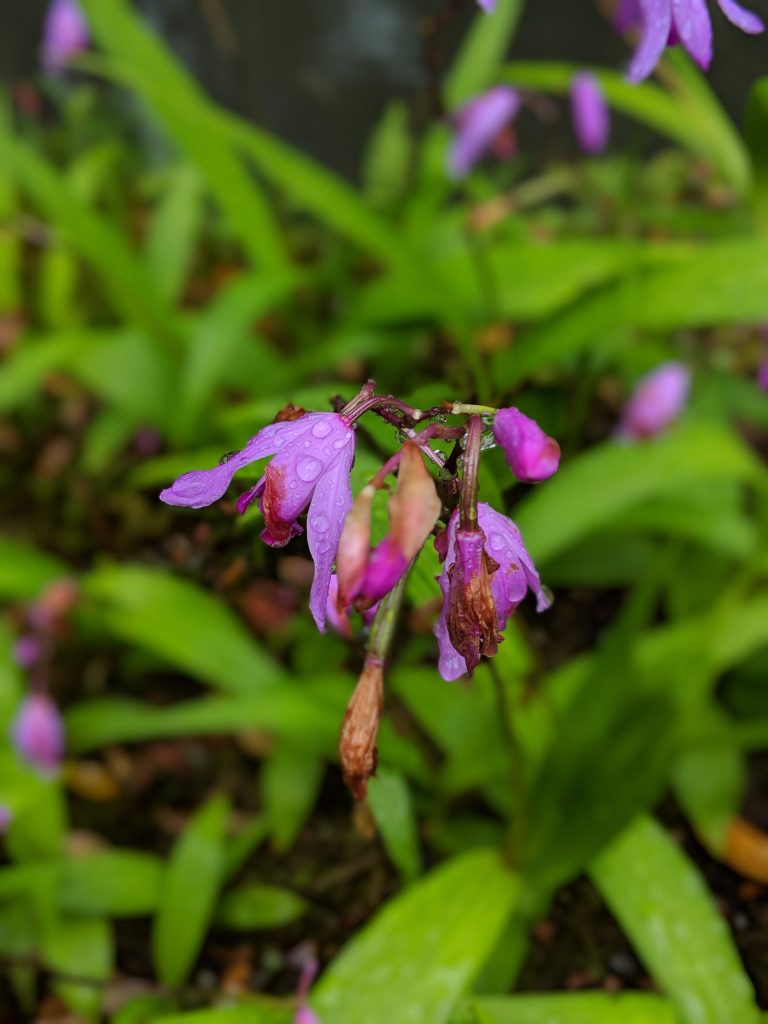
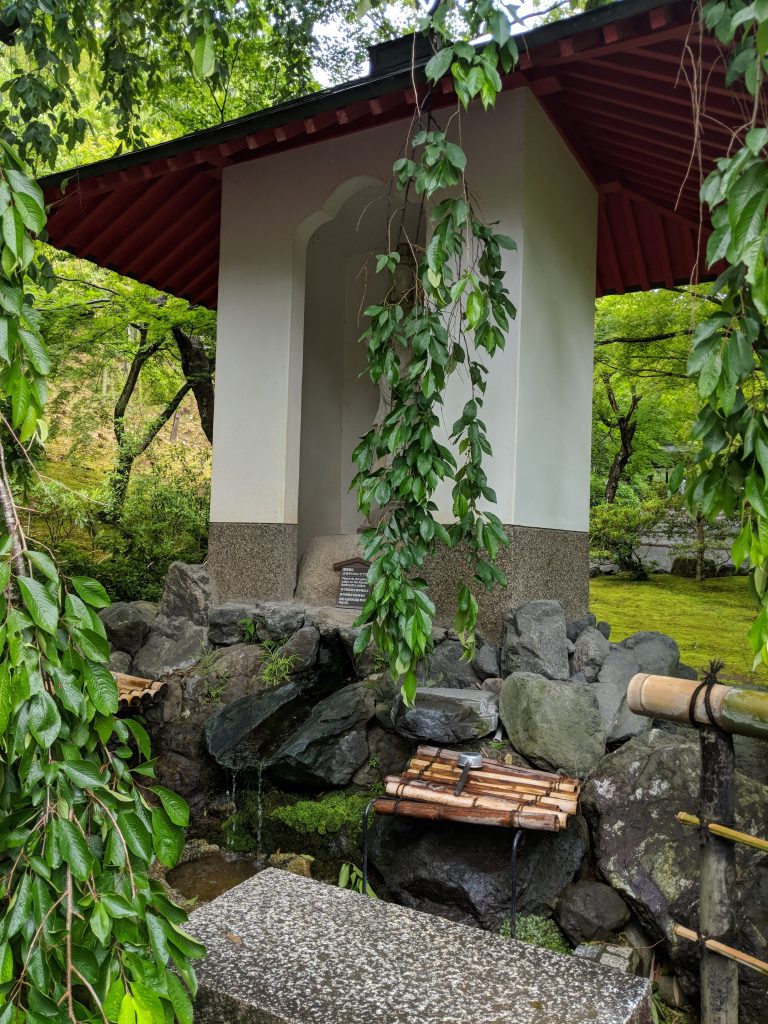




The garden has a variety of plants, with little wooden signs letting you know the species.
With plenty of water features and landmarks it easy to want to walk in every direction simultaneously.






Paths through the garden all converged on the central building, which sat atop carefully raked pebbles alongside a great pond that acts as the heart of the garden.



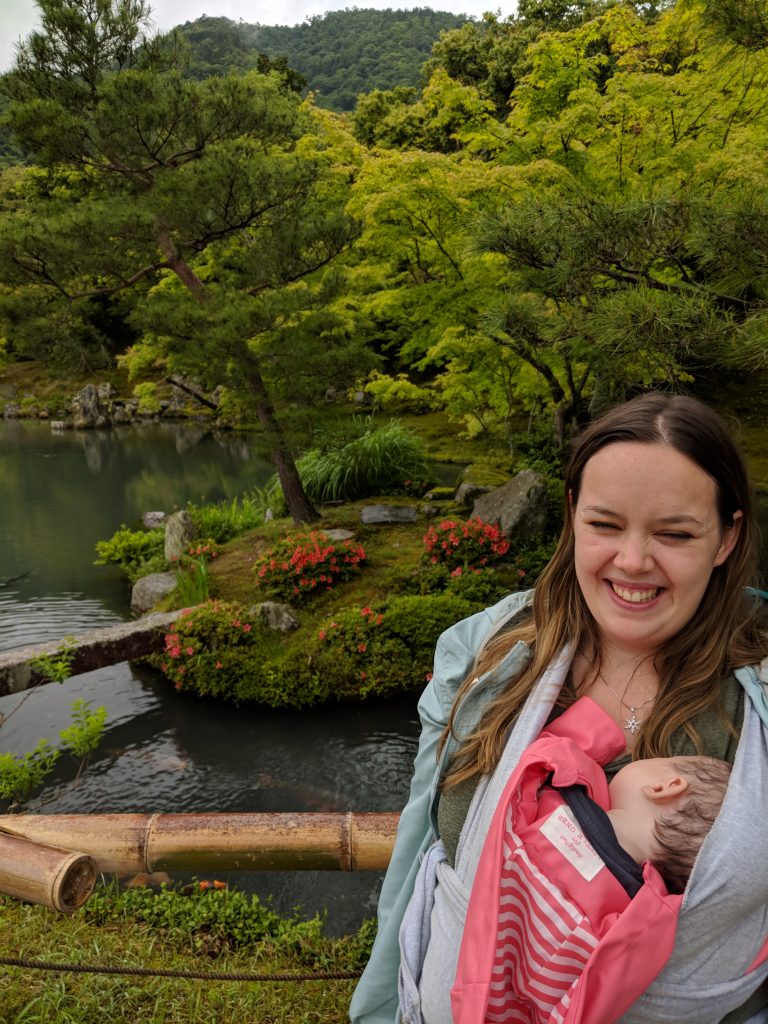


I would later find out that this is the head temple of the Tenryū branch of the Rinzai school of Zen Buddhism. It was constructed in 1935 primarily to venerate my main boy Gautama Buddha, aka Budhha. However, it was originally founded by the controversial Ashikaga Takauji in 1339 and is now a registered UNESCO World Heritage Site.
Wow! Thanks, Wikipedia.

I kind of went insane and this point, and ended up taking hundreds of pictures and videos that I could use as reference material for my game projects. I mean, just look at the carefully crafted aesthetics of this place…

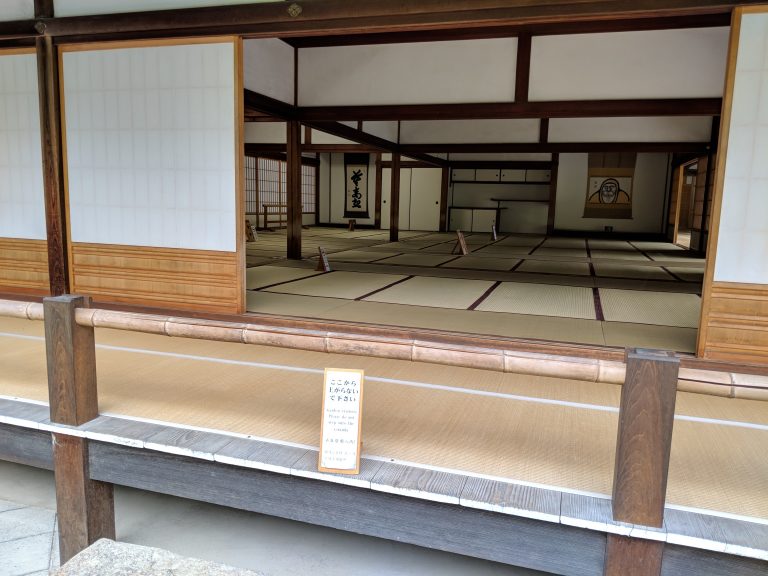
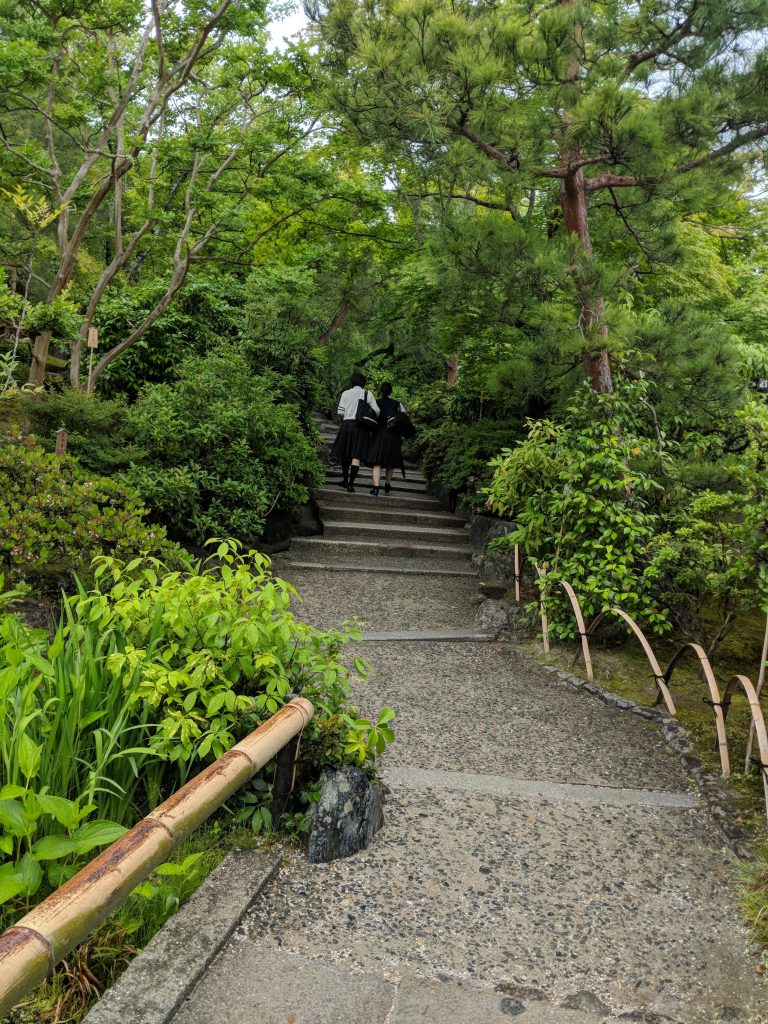

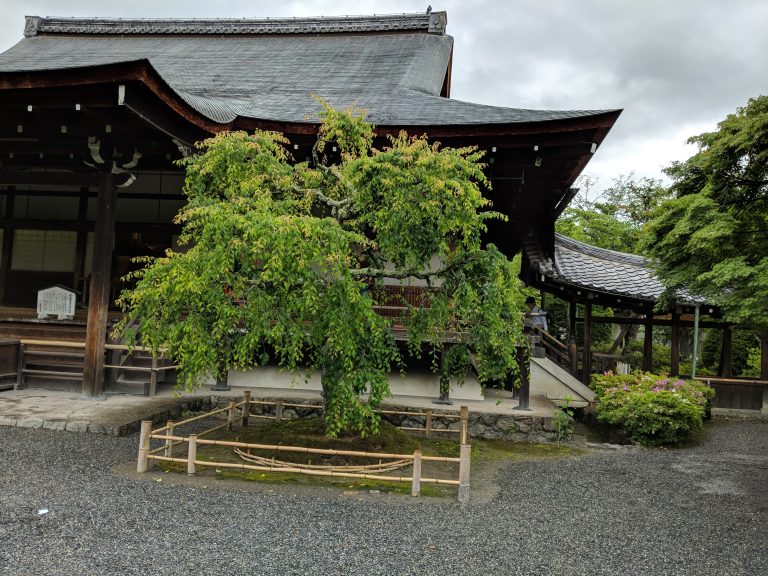

…even on a rainy day, this place makes you look good!


Unfortunately, we didn’t feel we had enough time to explore the whole site, which housed some good looking buildings which you could pay extra to walk within. As usual, we had a train to catch.
Tell the Buddha, I’m sorry.
https://www.youtube.com/watch?v=2fmMDHWQWNU
The rain persists and the sky is still grey as we continue along the bamboo-laden path, which begins to incline. A quick check of my phone confirms it’s still above 20°C, which together with the weight of carrying a sleepy child would explain the sudden sweat that breaks across my back.
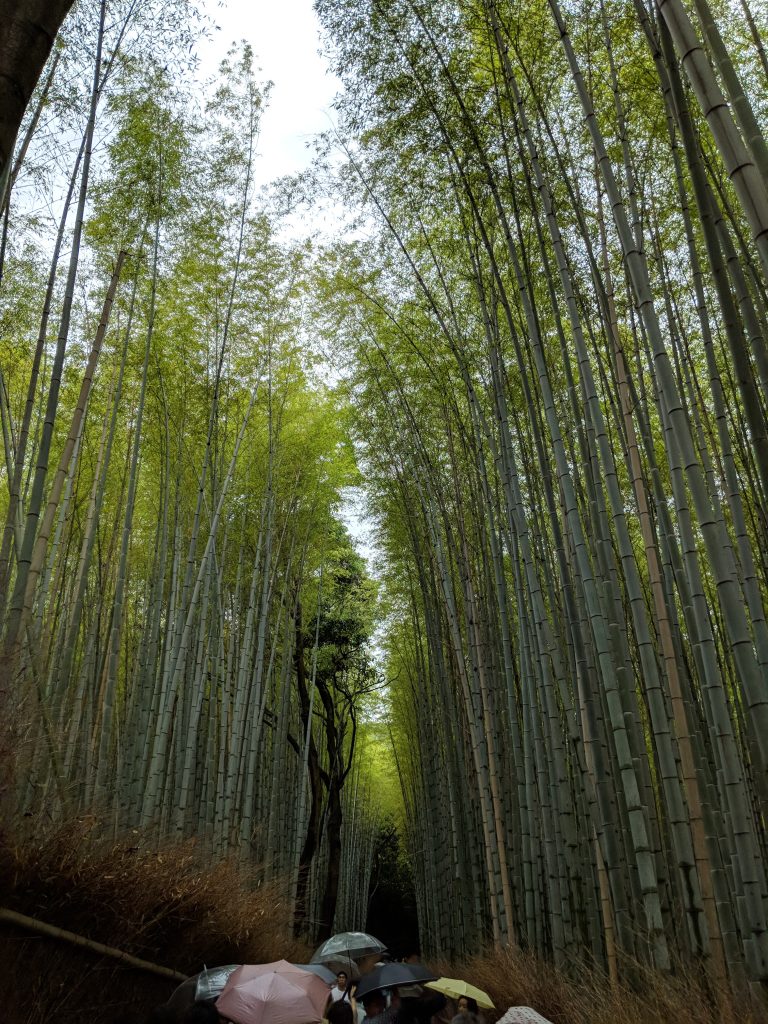


The path breaks and we are given three choices. For now, we have to say no to the highly-rated Okochi Sanso Garden and the quiet retreat of Kameyama-Kōen Park. We hang right at the crossroads and follow the curvature of the path back downhill until we reach Torokko Arashiyama Station.
We’ve come for romance…
Disaster!
The station is closed and so we would not be riding the Sagano Romantic Railway today. This felt like one of the biggest disappointments of the holiday at the time, simply because we had promised my son a rip-roaring rail adventure through the epic valley scenery of the Hozugawa (Hozu) river ravine. However, he was falling asleep due to a combination of hunger and heat exhaustion, so the level of disappointment we were projecting onto the experience was unjustified. Especially since there was so much more to do and see in the area.
Even immediately around us, we could see attractive opportunities that peaked our interest. Keeping in mind our party’s current condition we agreed to loop around back to the main streets by heading south, which would take us through Kameyama Park and along by the Katsura river.
We were so glad we did.

We crossed a large open space within the park, where a tree’s growth had been shapely wrapped to provide a canopy which gave us refuge from the rain. Taking note of a sign that warned us not to feed the monkeys catches we make our way down a wide, craggy set of steps that branched out at the bottom and led paths off into different parts of the park.
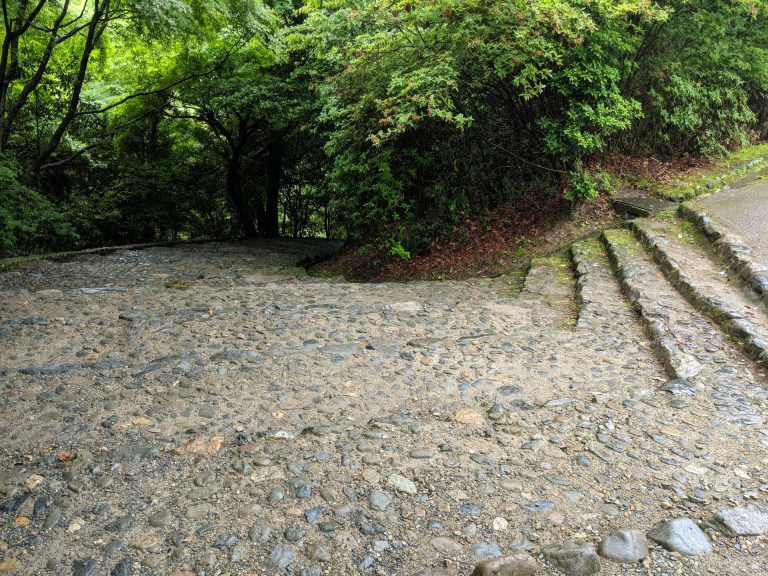



Off down a lesser kept path and through a tangle of branches I spot shimmering emerald water. We bound down more steps, almost tumbling as the path twists back on itself in a sharp descent towards the river.



We hear shouting from further up river and within seconds two boats full of tourists come floating down the way. The first boat crew do a trick, twenty seconds later at around the same point in the water the trailing boat crew seem to do the exact same thing. Since we originally had in mind to take the boat ride back after the Sagano Romantic Train, this is what we had to look forward to on the two-hour return trip. It was a bit cringe-inducing, especially when we saw a motorised merchant boarded their boat and start hawking their wares to some reluctant passengers.
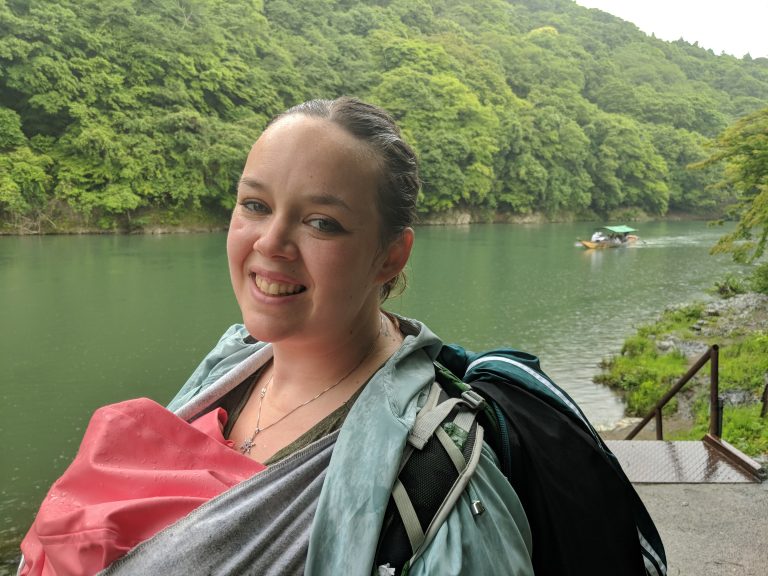
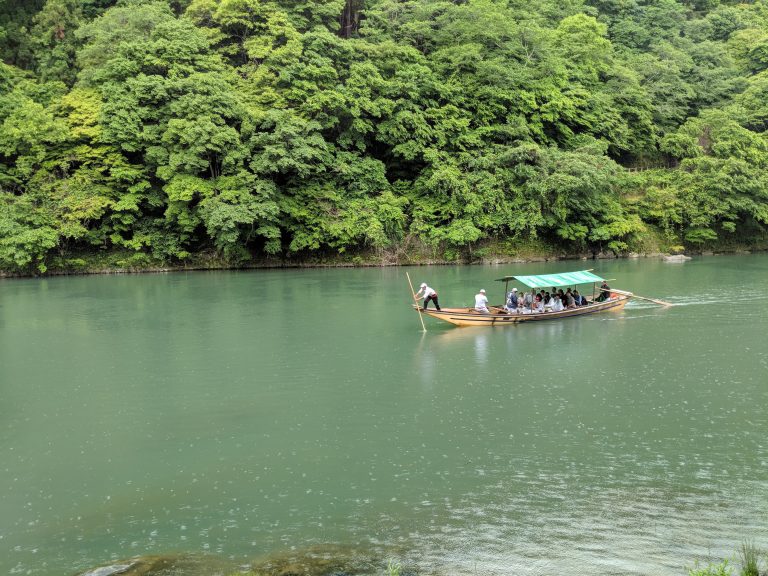


The crew were working up the tourist flock so well that when one of them slips and smashes his face on the deck everyone acts like it’s part of the performance. However, from the riverbank we can see this little trick isn’t in the script of the pursuing boat.
How are you meant to follow that spectacle?
During the brief walk back towards town, we spot a kimono bearing woman shuffling up an alleyway that runs beside the rather excellent looking Arashiyama Benkei onsen (hot spring) and ryokan (traditional Japanese inn).
We wanted her picture!



Like the creeps we are we give chase but end up in the streets behind the building with our subject seemingly speeding away in a rickshaw.
*shakes fist* Until our paths cross again, lady. Next time…



Instead of criminally harassing the natives we decide to check out a cafe that is signposted nearby. Checking TripAdvisor we see that this place is the real deal and so we enter and are warmly greeted by an elderly Japanese couple who I assume run the place.

We grab some juice, iced coffee and some of the most divine chocolate ice cream I’ve had the pleasure of tasting. To be honest, the menu was enticing, if a little pricey for the amount of food we were after – hint: we can be greedy pigs – so we finish up, say thank you and continue on to the main streets.
Now, what can I say about Arashiyama Station that doesn’t come across in pictures? Maybe firstly that I’m referring to the light rail station on the north side of the river, which provides the Keifuku Randen Tram Line service, not the Hankyu Kyoto Main Line train station which is located on the south.


The station was surrounded by street food stalls and so we took this opportunity to gorge ourselves on some of the great Kyoto foods they had on offer.
I wish I could say what I had but we were so hungry (read: greedy) we just pointed out items and began eating them right there in the station. I don’t even know if we remembered to pay, or if we were just consuming stolen food right there in front of the stalls. It was all just that good you forget.


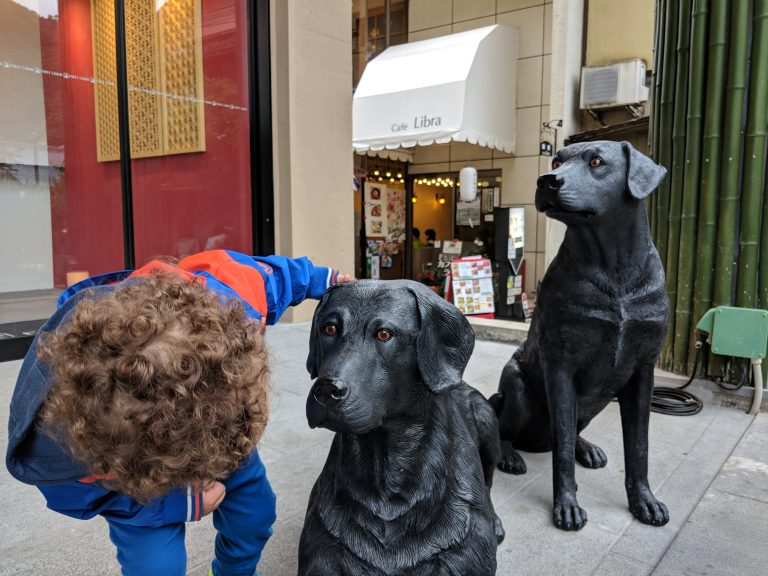

I remember standing on the platform with my son as Randen tram cars pulled in and out of the station, distracting my son for long enough that I could destroy the generous serving of specially seasoned fries we got him from a popup stall whose name I wish I remembered.
I came back to reality as we marched along the thin pavements that led back to the JR station we first arrived at, which meant we were on our way back to our hotel in central Kyoto. Some playful sights caught my eye so I took what pictures I could as the increasingly heavier rain had us pacing along double quick.



We soon found ourselves on the station with the train rolling into the platform. However, we were a bit sad, as we could see the cars from the Sagano Romantic Train on the tracks across the way. Was it really out of service that day, or had we simply went to the wrong station?

We tried not to dwell on it as we spent the rest of the evening relaxing and checking out the katsu, curry and noodle dishes at the local Nakau Japanese restaurant.


Instead of regretting what we’d missed we grabbed plenty of treats from Lawson (hail, Lawson!) and double checked our itinerary for the following day. Our tickets for the first Shinkansen (bullet train) were booked in advance and we checked the opening times for all of the things we wanted to see in…
https://vimeo.com/246059221


